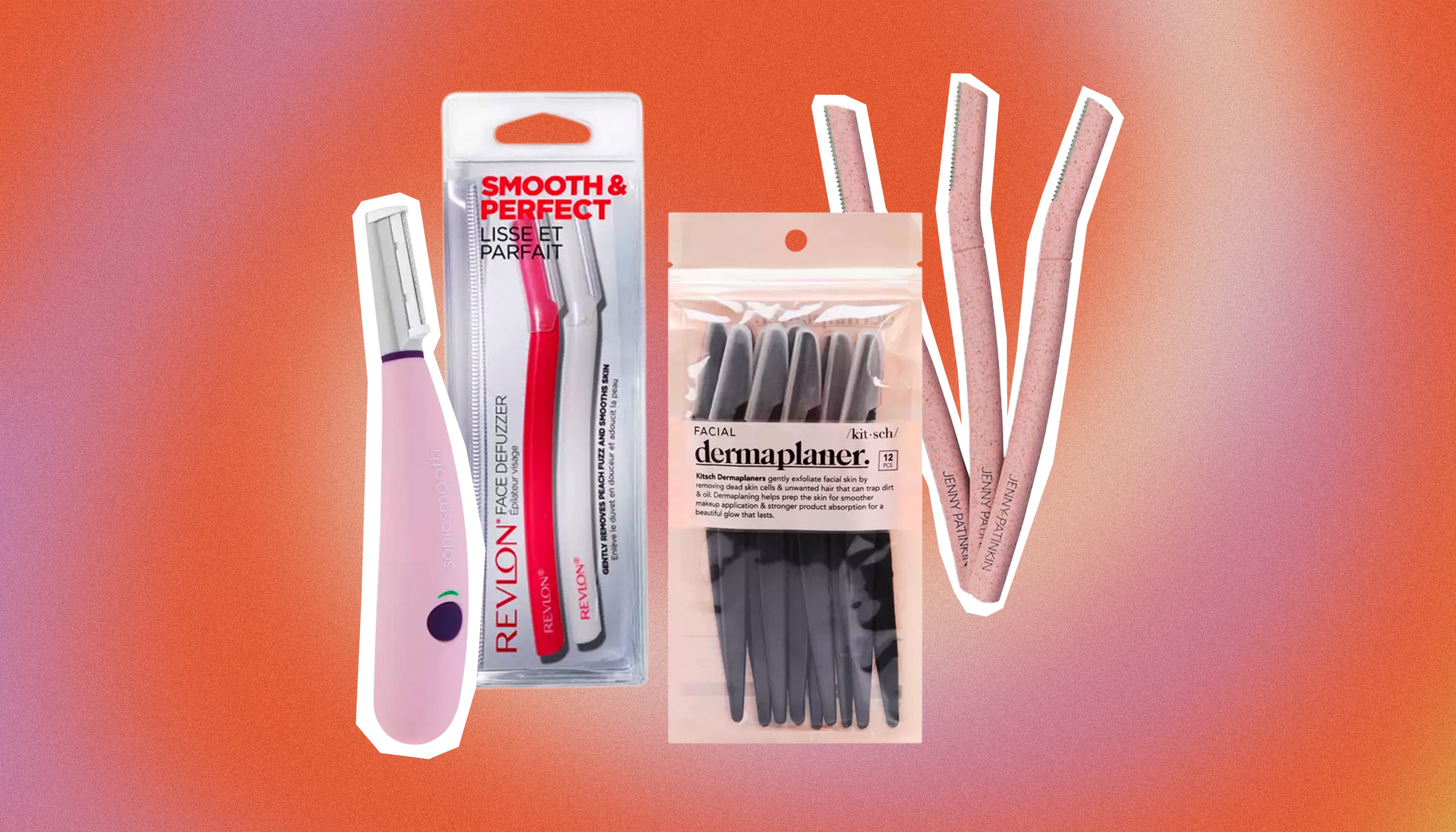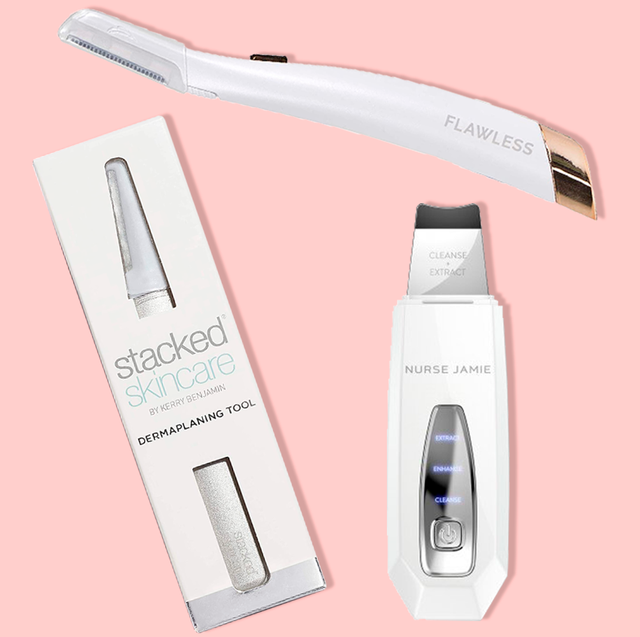Dermaplaning has become one of the most sought-after skincare treatments, and finding the best dermaplaning tool for beginners can be overwhelming. If you're new to this exfoliation method, understanding the tools and techniques is crucial to achieving smooth, radiant skin. This guide will walk you through everything you need to know to make an informed decision.
Dermaplaning is a physical exfoliation technique that involves gently scraping off dead skin cells and vellus hair (commonly known as "peach fuzz") using a specialized tool. It's a non-invasive procedure that promotes cell turnover and helps products penetrate deeper into the skin. As a beginner, it's essential to choose the right tool to ensure safety and effectiveness.
In this article, we'll explore the best dermaplaning tools available, tips for beginners, and answer common questions about the procedure. Whether you're considering dermaplaning for the first time or looking to upgrade your skincare routine, this guide will help you achieve professional-level results at home.
Read also:Morgan Lane
Table of Contents
- Introduction to Dermaplaning
- Benefits of Dermaplaning
- Best Dermaplaning Tools for Beginners
- How to Choose the Right Tool
- Beginner Techniques for Dermaplaning
- Precautions and Safety Tips
- Frequently Asked Questions
- Comparison of Popular Tools
- Expert Recommendations
- Conclusion
Introduction to Dermaplaning
Dermaplaning is a skincare treatment that involves using a scalpel-like tool to remove the outermost layer of dead skin cells and vellus hair. This procedure is often performed by professionals in spas or dermatology clinics, but with the right tools, you can achieve similar results at home. For beginners, it's important to understand the basics of dermaplaning before diving into the process.
One of the key benefits of dermaplaning is its ability to enhance skin texture and clarity. By removing dead skin cells, the skin appears smoother and more radiant. Additionally, the removal of vellus hair allows skincare products to penetrate deeper into the skin, improving their effectiveness.
When choosing a dermaplaning tool, consider factors such as ease of use, safety features, and affordability. The best dermaplaning tool for beginners should be user-friendly and designed for home use, ensuring a safe and effective experience.
Benefits of Dermaplaning
Dermaplaning offers numerous benefits for the skin, making it a popular choice among skincare enthusiasts. Here are some of the top advantages:
- Exfoliation: Removes dead skin cells, promoting cell turnover and smoother skin.
- Improved Product Absorption: Allows serums, moisturizers, and other skincare products to penetrate deeper into the skin.
- Reduction of Vellus Hair: Temporarily removes fine facial hair, giving the skin a smoother appearance.
- Boosts Skin Radiance: Enhances skin clarity and brightness, leaving it looking healthier.
These benefits make dermaplaning an excellent addition to any skincare routine, especially for those looking to improve their skin's texture and appearance.
Best Dermaplaning Tools for Beginners
With so many dermaplaning tools available on the market, it can be challenging to choose the right one. Here's a breakdown of the best options for beginners:
Read also:Andrea Sixtos
Electric Dermaplaning Tools
Electric dermaplaning tools are designed for ease of use and convenience. These devices often come with built-in safety features, making them ideal for beginners. Some popular options include:
- DermaFlash: A handheld device that uses oscillating blades to gently remove dead skin cells and vellus hair.
- Silk'n FaceSense: Combines dermaplaning with light therapy to target pigmentation and fine lines.
Electric tools are generally more expensive but offer a more controlled and precise experience.
Manual Dermaplaning Tools
Manual dermaplaning tools, such as dermaplaning razors, are a cost-effective option for beginners. These tools require more skill and precision but can be just as effective as electric devices. Some popular choices include:
- Derma-blade: A simple, handheld tool with a replaceable blade for exfoliation and hair removal.
- Dr. Dennis Gross Skincare Facial Derm-blade: A high-quality dermaplaning razor designed for at-home use.
Manual tools are more affordable but require proper technique to ensure safety and effectiveness.
How to Choose the Right Tool
Selecting the best dermaplaning tool for beginners involves considering several factors:
- Skin Type: Choose a tool that suits your skin type, whether it's sensitive, oily, or combination.
- Budget: Determine your budget and select a tool that offers the best value for your money.
- Experience Level: If you're new to dermaplaning, opt for a tool with safety features and easy-to-follow instructions.
By carefully evaluating these factors, you can find a dermaplaning tool that meets your needs and delivers professional-level results.
Beginner Techniques for Dermaplaning
For beginners, mastering the right techniques is essential to achieving safe and effective results. Here are some tips to get you started:
- Cleanse Your Skin: Start with a clean, dry face to ensure the tool glides smoothly.
- Use Gentle Pressure: Apply light pressure to avoid irritating the skin or causing cuts.
- Work in Small Sections: Focus on one area of the face at a time, using short strokes.
Practicing these techniques will help you become more comfortable with the process and improve your results over time.
Precautions and Safety Tips
While dermaplaning is generally safe, there are some precautions to keep in mind:
- Avoid Sun Exposure: After dermaplaning, the skin is more sensitive to UV rays. Use sunscreen to protect your skin.
- Don't Overdo It: Limit dermaplaning sessions to once every two to four weeks to allow your skin to recover.
- Consult a Dermatologist: If you have sensitive skin or certain skin conditions, consult a professional before trying dermaplaning at home.
Following these safety tips will help you avoid potential side effects and ensure a positive experience.
Frequently Asked Questions
Here are some common questions about dermaplaning:
- Does dermaplaning cause hair to grow back thicker? No, dermaplaning only removes vellus hair, which does not affect hair growth patterns.
- Can I use dermaplaning on sensitive skin? Yes, but it's important to choose the right tool and consult a dermatologist if needed.
- How often should I dermaplane? Limit sessions to once every two to four weeks to allow your skin to recover.
Comparison of Popular Tools
Here's a comparison of some of the most popular dermaplaning tools:
| Tool | Type | Price Range | Best For |
|---|---|---|---|
| DermaFlash | Electric | $150-$250 | Beginners looking for ease of use |
| Silk'n FaceSense | Electric | $200-$300 | Those seeking additional light therapy benefits |
| Derma-blade | Manual | $10-$20 | Cost-conscious beginners |
Expert Recommendations
According to dermatologists, dermaplaning is a safe and effective way to improve skin texture and appearance. Dr. Sarah Taylor, a board-certified dermatologist, recommends starting with a manual dermaplaning tool for beginners due to their affordability and simplicity. However, she emphasizes the importance of proper technique and safety precautions to avoid irritation or injury.
Conclusion
Dermaplaning is a fantastic way to enhance your skincare routine and achieve glowing, radiant skin. By choosing the best dermaplaning tool for beginners and following proper techniques, you can enjoy professional-level results at home. Remember to prioritize safety, consult a dermatologist if needed, and practice regularly for the best outcomes.
Now that you have a comprehensive understanding of dermaplaning tools and techniques, it's time to take action! Share your thoughts in the comments below, and don't forget to explore other articles on our site for more skincare tips and tricks. Happy dermaplaning!


